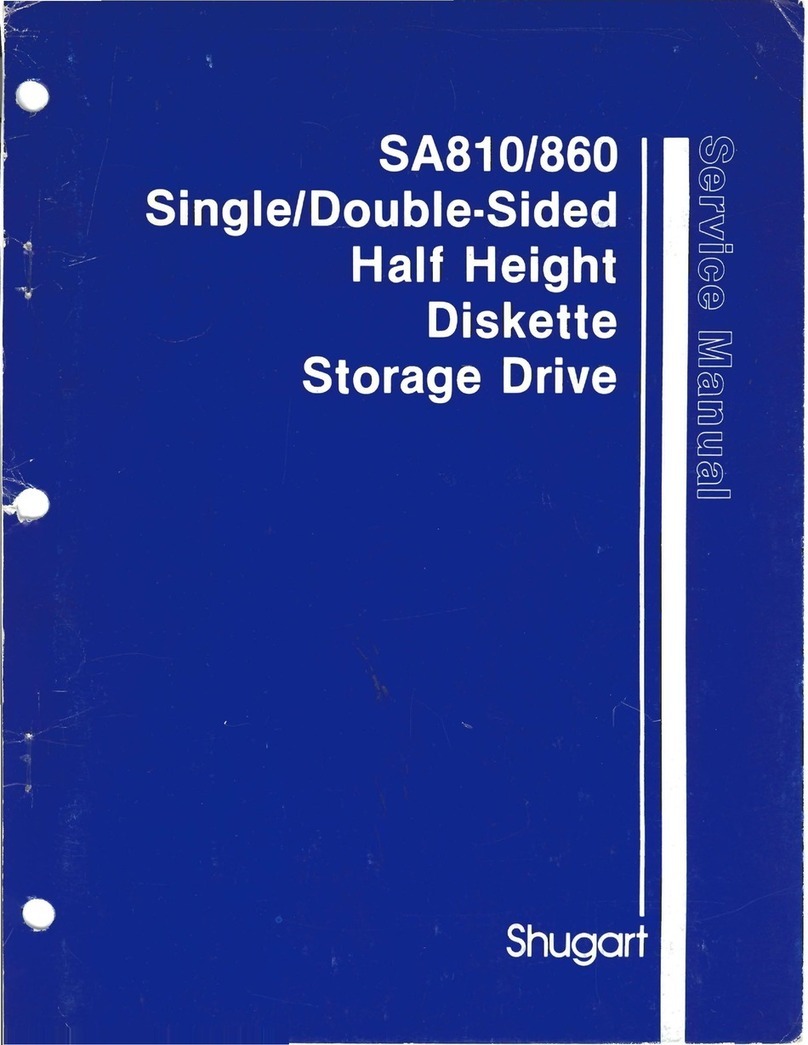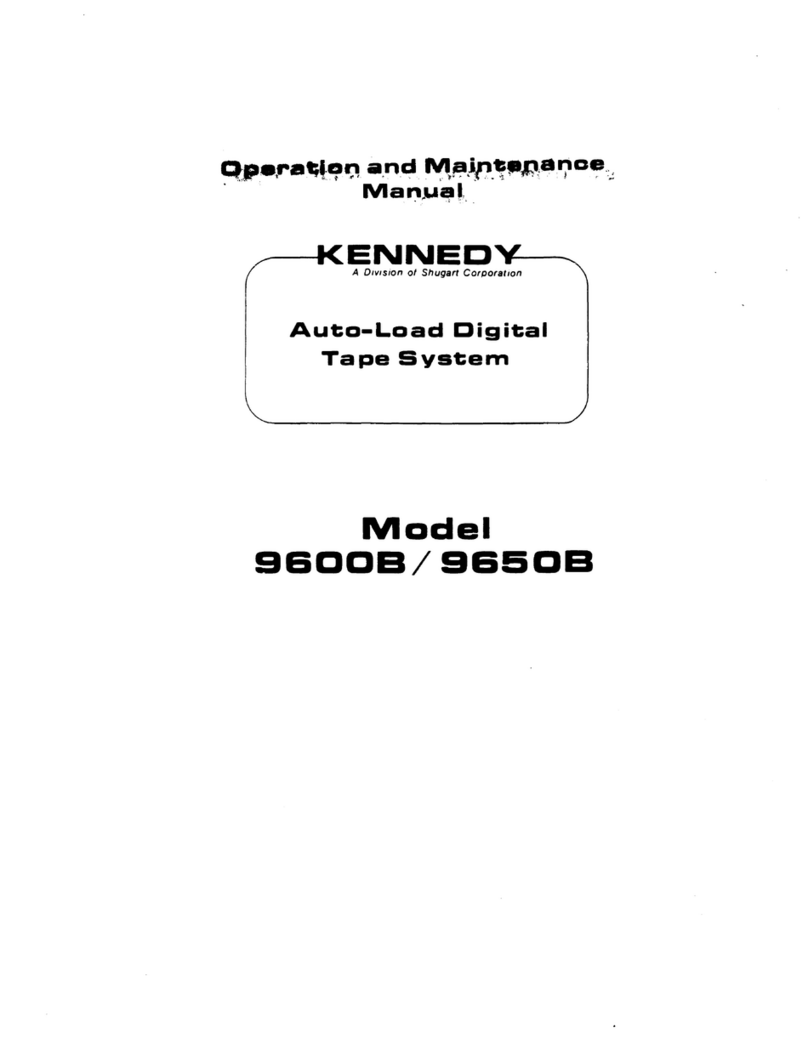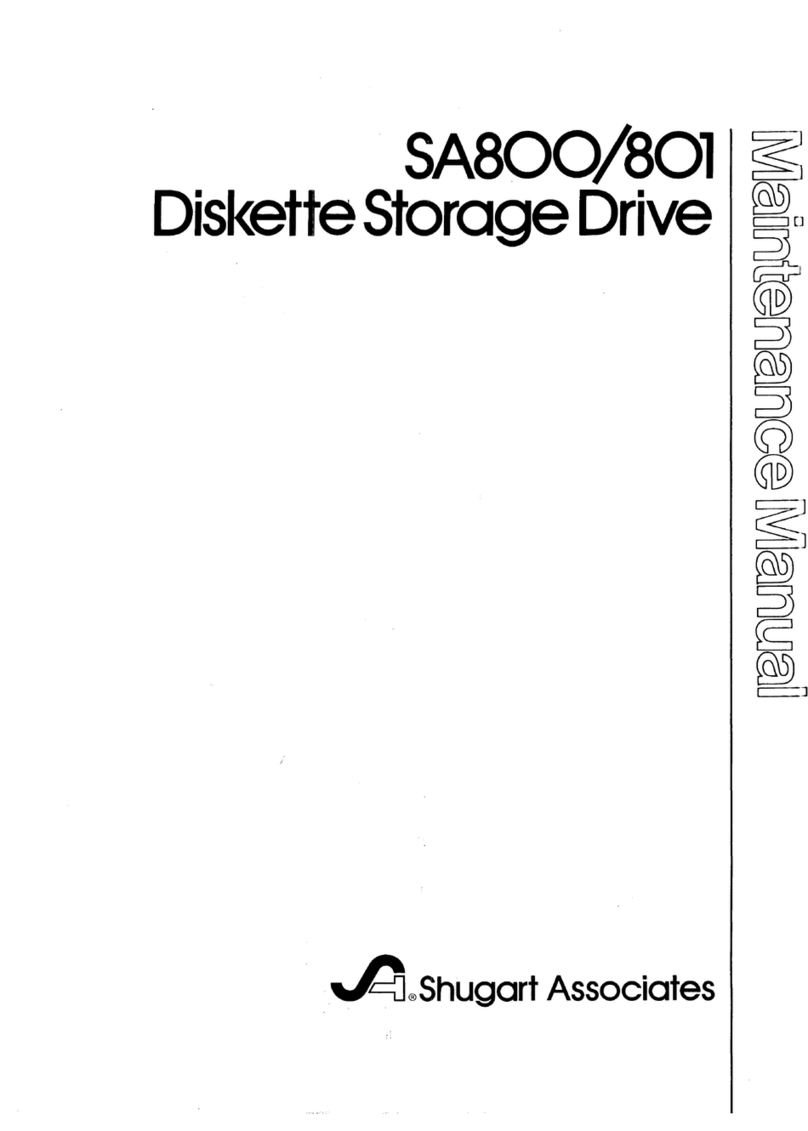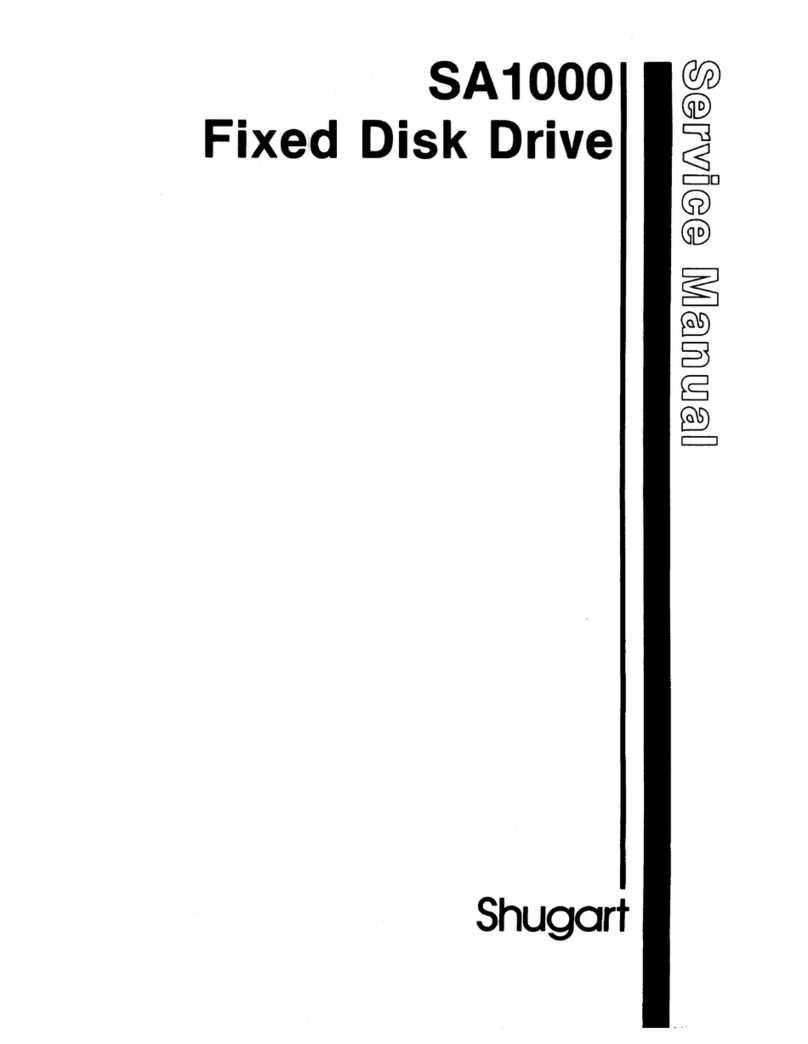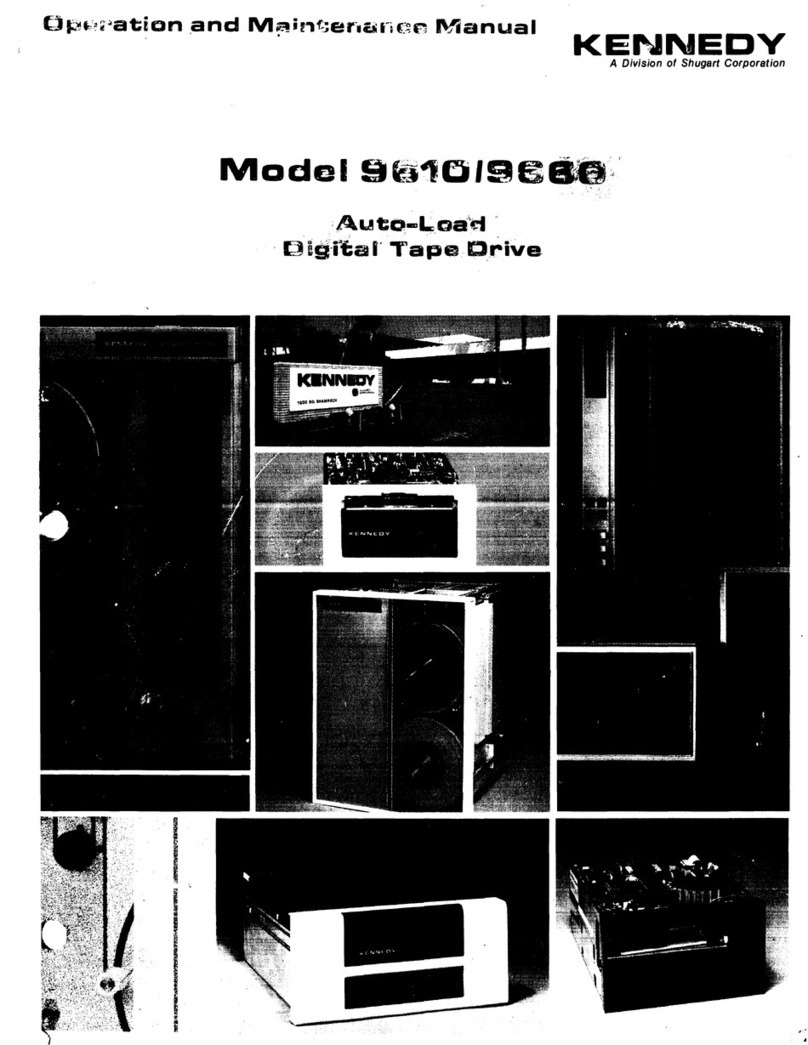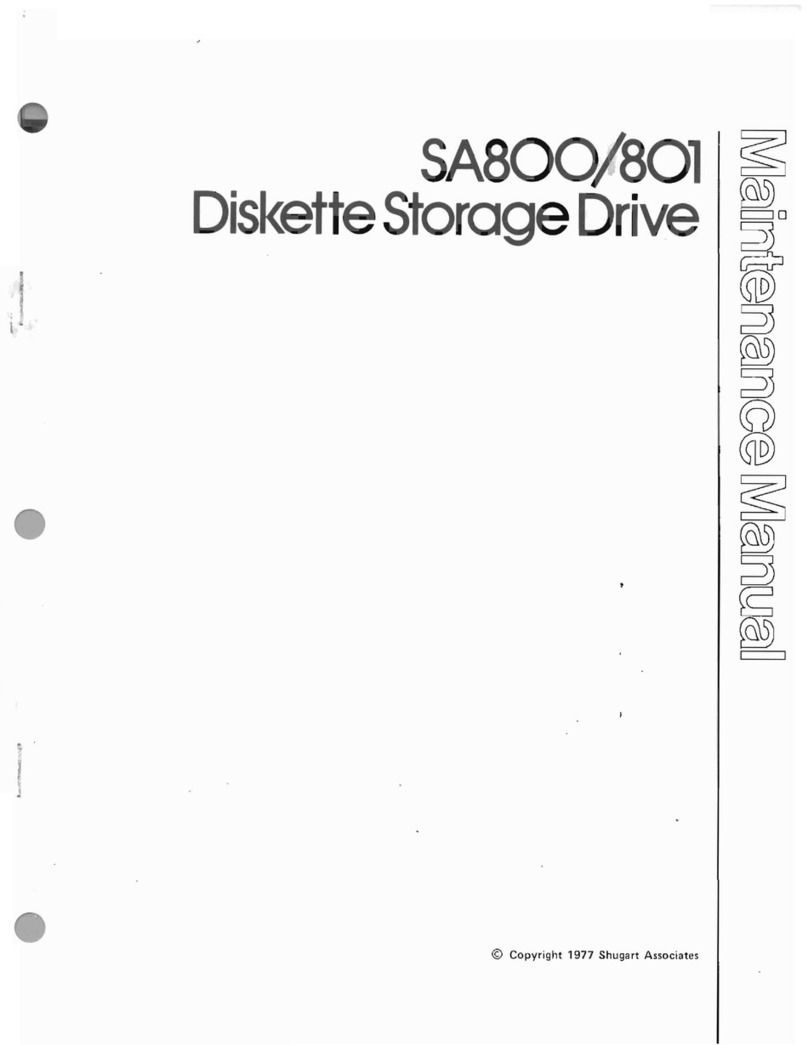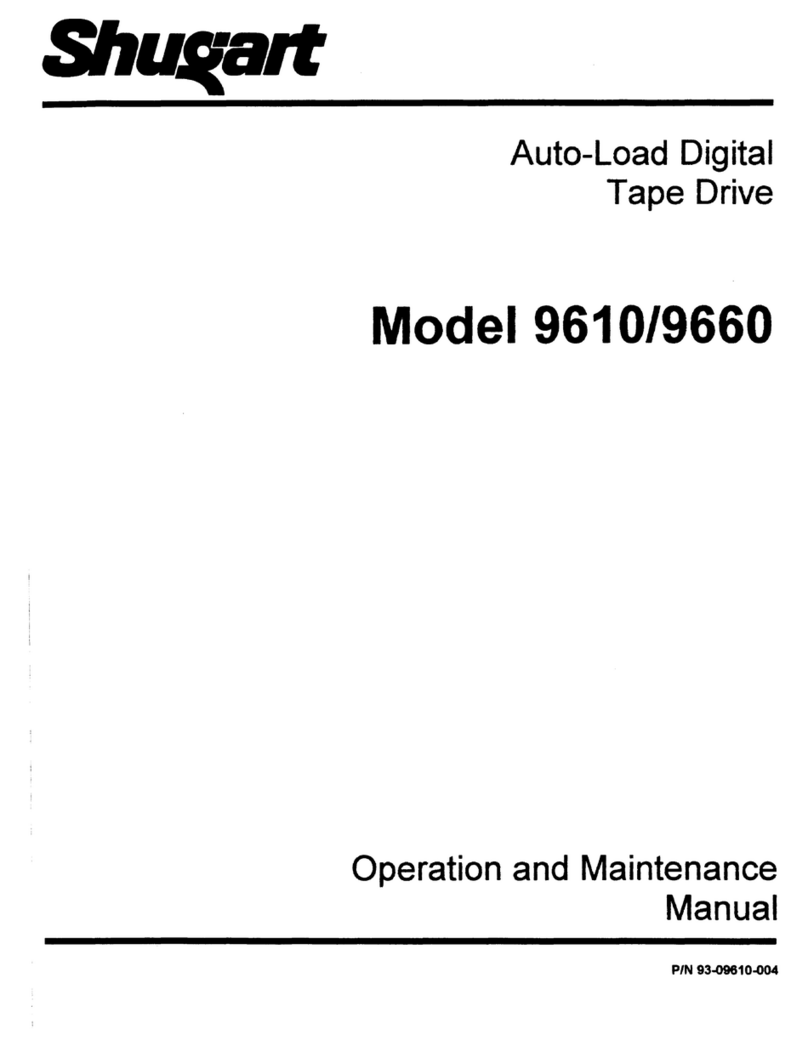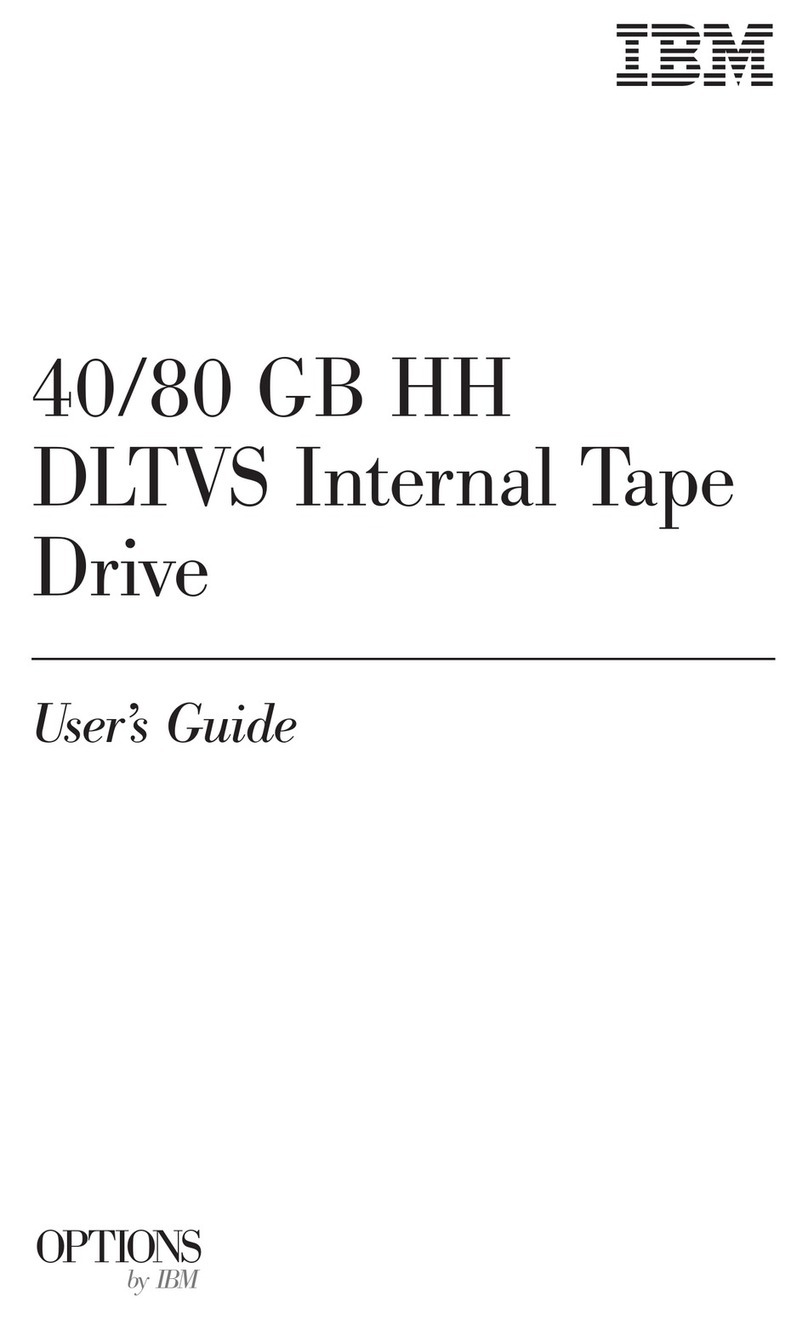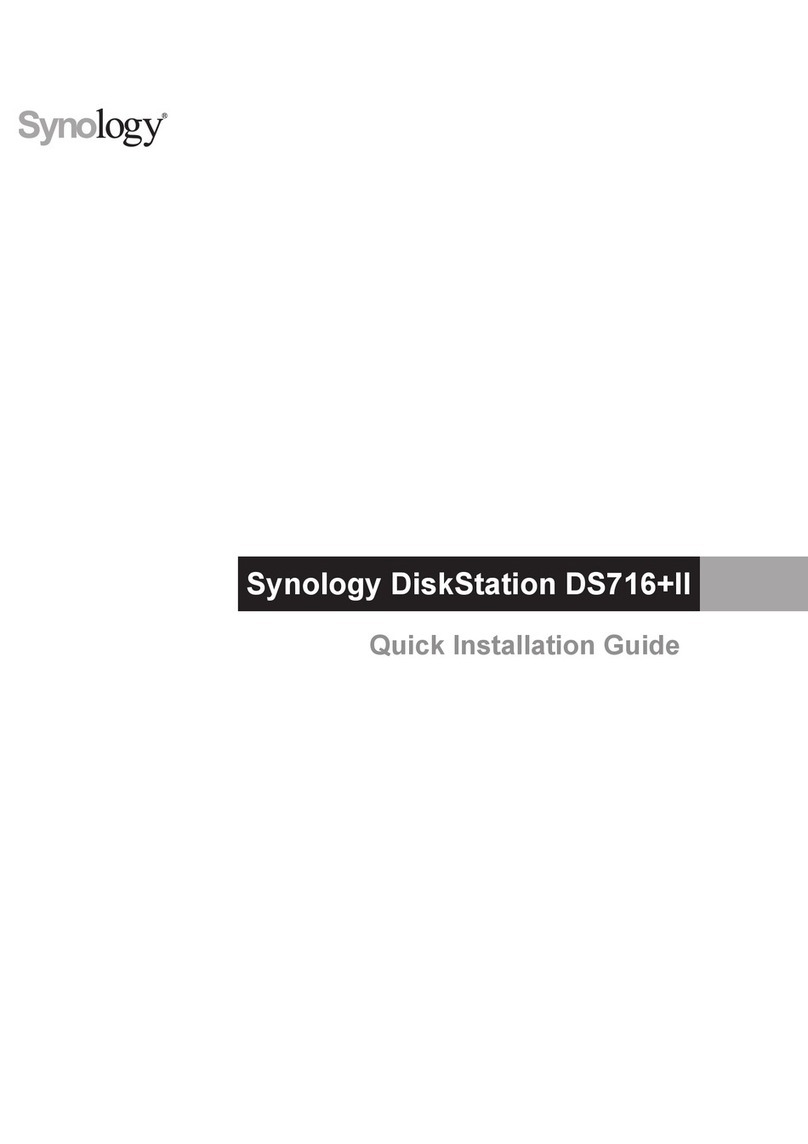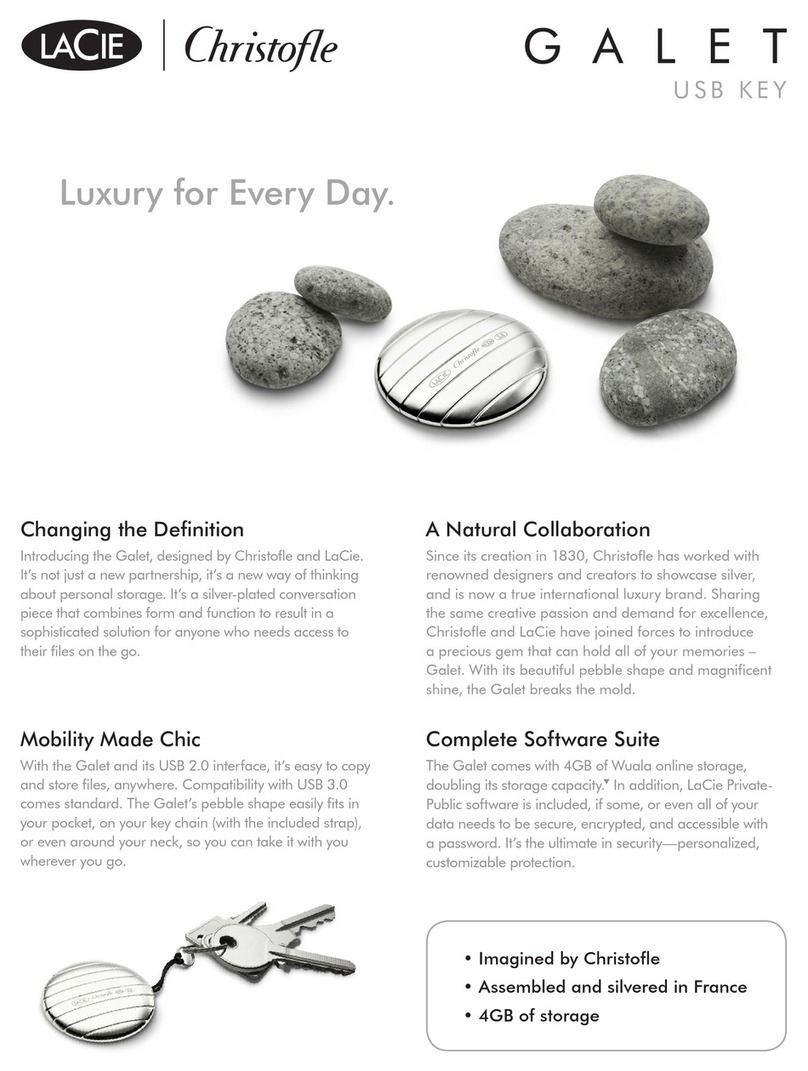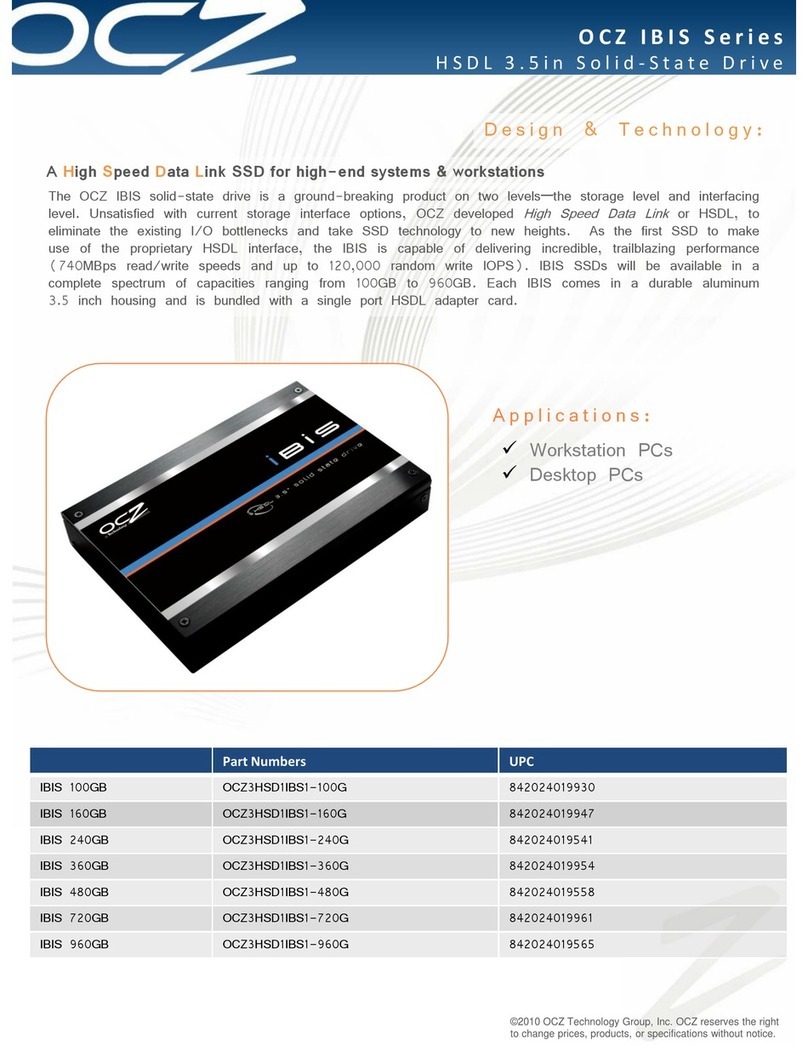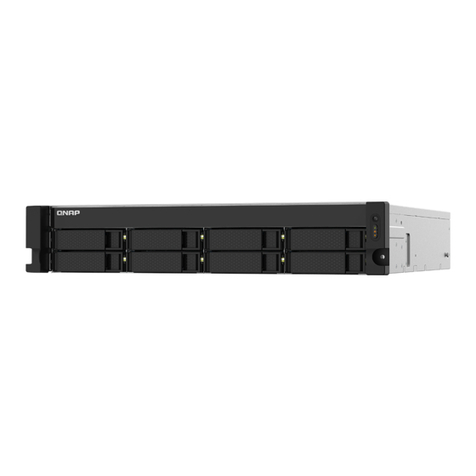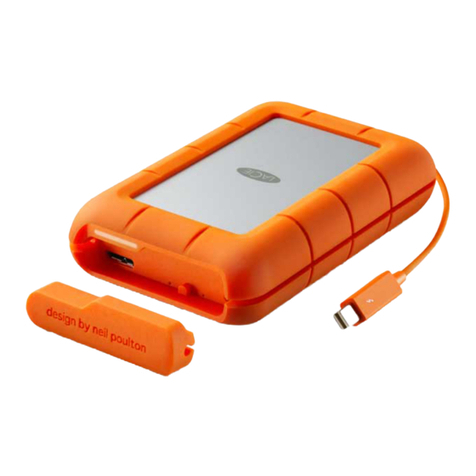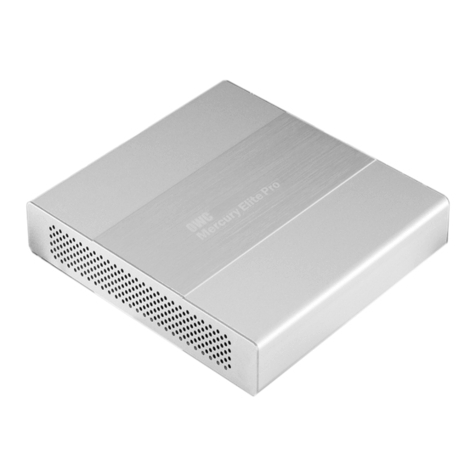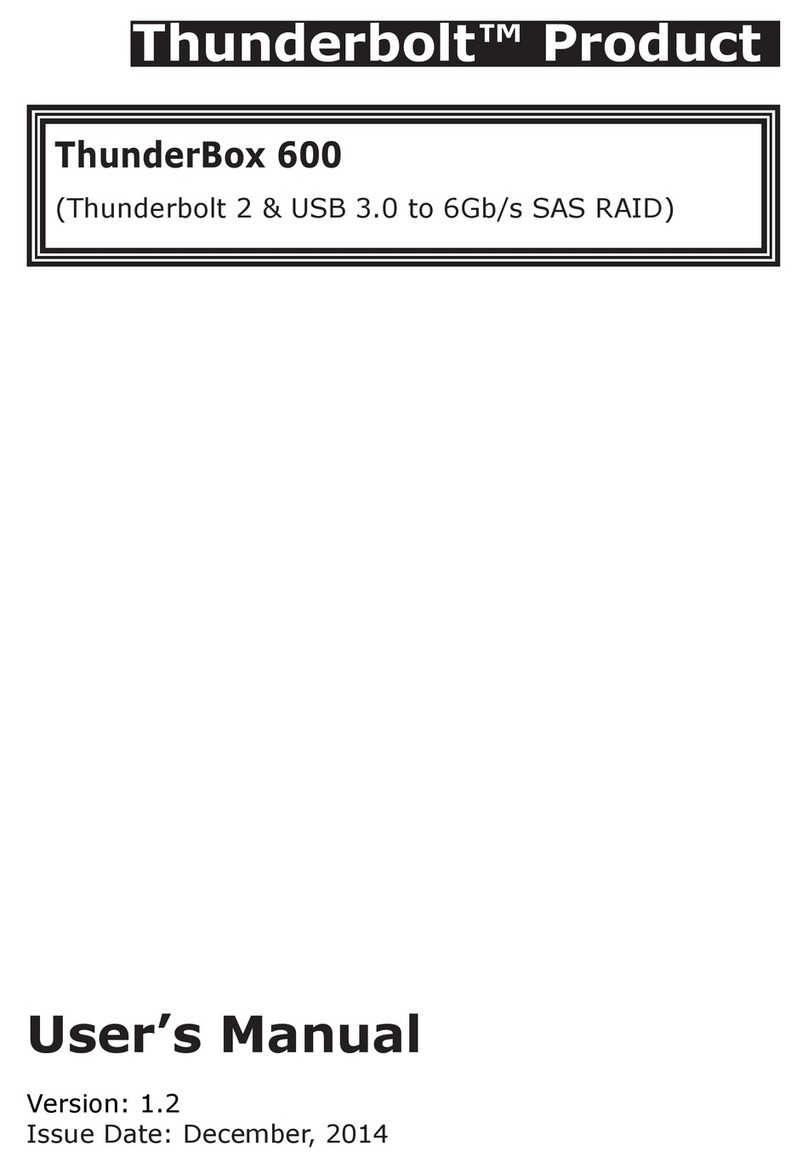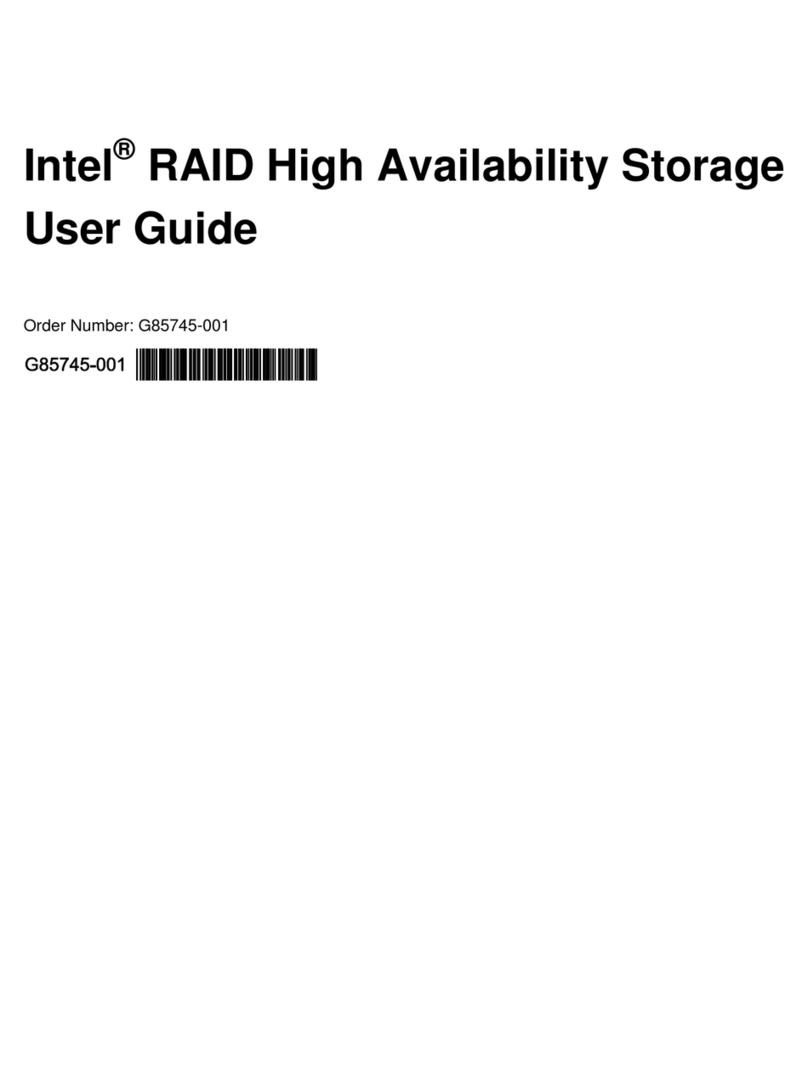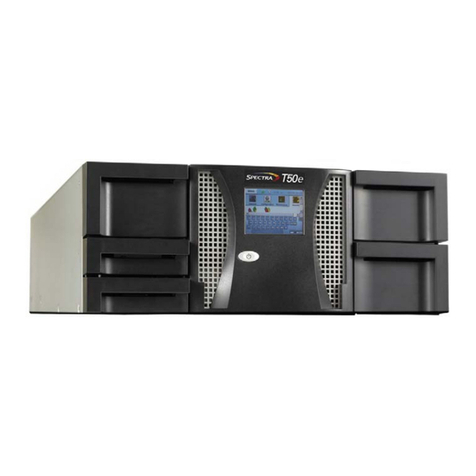
2.0 FUNCTIONAL CHARACTERISTICS
2.1 General Operation
The SA450 minifloppy Disk Drive consists of read/write and control electronics, drive mechanism, read/write
head, and precision track positioning mechanism. These components perform the following functions:
•Interpret and generate control signals.
•Move read/write heads to the desired track.
•Read and write data.
The interface signals and their relationship to the internal functions are shown in Figure 2.
2.2 Read/Write and Control Electronics
The electronics are packaged on one PCB which contains:
•Index Detector Circuits
•Head Position Actuator Driver
•Read/Write Amplifier and Transition Detector
•Write Protect
•Drive Select Circuit
•Drive Motor Control
2.3 Drive Mechanism
The DC drive motor under servo speed control (using an integral tachometer) rotates the spindle at 300 rpm
through abelt-drive system. An expandable collet/spindle assembly provides precision media positioning to
ensure data interchange. Amechanical interlock prevents door closure without proper media insertion, thus
eliminating media damage.
2.4 Positioning Mechanics
The read/write head assembly is accurately positioned through the use of aprecision spiral cam. This cam
has aV-groove with aball bearing follower which is attached to the head carriage assembly. Precise track
location is accomplished as the cam is rotated in discrete increments by a stepping motor.
2.5 Read/Write Heads
The proprietary heads are asingle element ceramic read/write head with straddle erase elements to provide
erased areas between data tracks. Thus normal interchange tolerances between media and drives will not
degrade the signal to noise ratio and insures diskette interchangeability.
The read/write heads are mounted on acarriage which is located on precision carriage ways. The diskette is
held in aplane perpendicular to the read/write heads by aplaten located on the base casting. This precise
registration assures perfect compliance with the read/write heads. The read/write heads are in direct con-
tact with the diskette. The head surface has been designed to obtain maximum signal transfer to and from
the magnetic surface of the diskette with minimum head/diskette wear.
2.6 Recording Formats
The format of the data recorded on the diskette is totally afunction of the host system, and can be designed
around the users application to take maximum advantage of the total available bits that can be written on
any one track.
For adetailed discussion of the various recording formats refer to Section 7.0.
